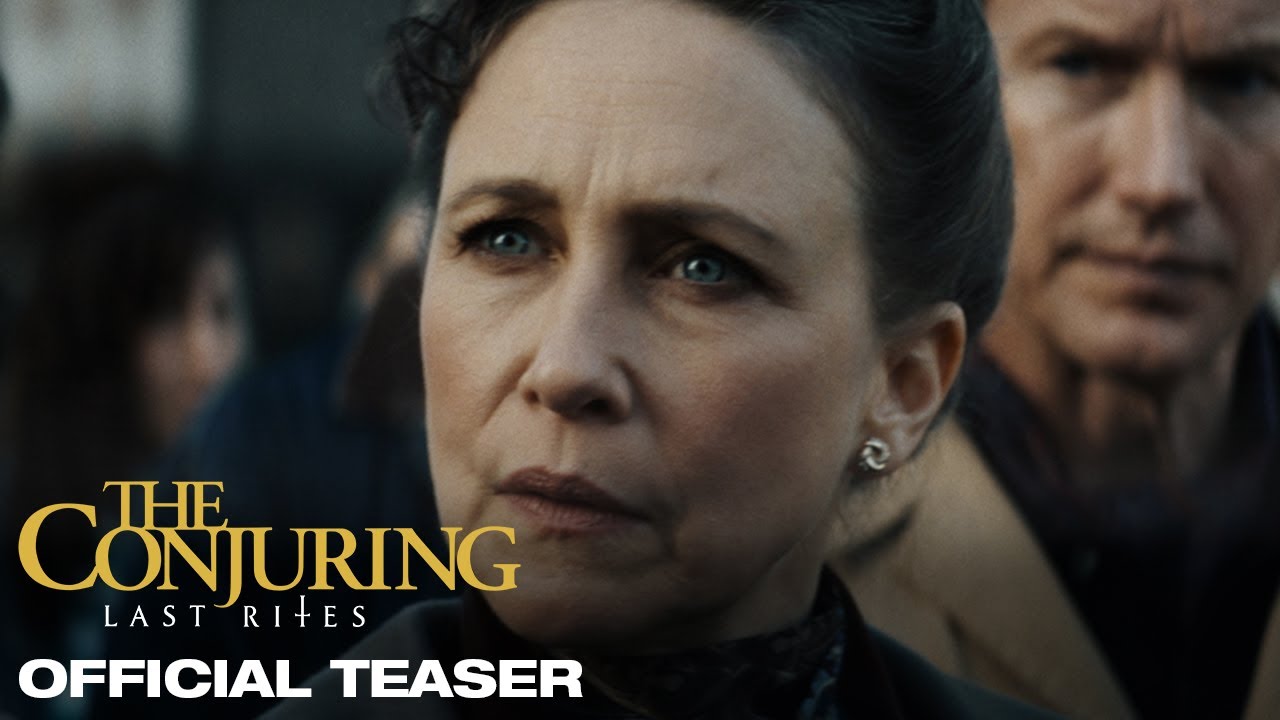The Conjuring: Last Rites (2025) Movie Review – A Visual Farewell to the Warrens
Introduction
The Conjuring: Last Rites (2025) marks the final chilling entry in one of horror’s most iconic franchises. With a focus on visual grandeur, director Michael Chaves returns to wrap up Ed and Lorraine Warren’s supernatural saga.
Does it match the cinematic standard of past entries? Let’s dive into its cinematography, effects, and how it compares within the horror genre.
Stunning Cinematography Techniques
From the first scene, the film impresses with dynamic camera angles and moody lighting that add depth to each haunting moment. The use of long tracking shots builds suspense without relying solely on jump scares.
The shadow play and contrast lighting enhance the eerie settings, turning ordinary locations into terrifying backdrops, reminiscent of classic haunted-house films.
Use of Color and Framing
Color palettes lean heavily on desaturated blues and greys, reflecting the somber tone of the story. The framing isolates characters during tense scenes, increasing the feeling of vulnerability.
This visual style echoes elements seen in horror masterpieces, aligning with genre expectations while keeping the audience engaged.
Visual Effects Breakdown
The supernatural elements come alive through a seamless blend of practical effects and CGI. Demonic manifestations and spiritual distortions feel more tactile this time, thanks to improved design and integration.
Notably, the spirit appearances avoid cartoonish exaggerations, favoring subdued, grotesque aesthetics that instill fear subtly rather than forcefully.
Haunting Atmosphere Through Effects
The film uses fog, flickering lights, and subtle sound design to accompany its effects, creating a tension-filled experience. Effects don’t dominate the screen—they serve the story and add layers of terror.
This reserved approach enhances believability, a technique fans of earlier Conjuring films will appreciate.
Comparison to Industry Standards
Compared to recent horror releases, The Conjuring: Last Rites stands out in its visual polish and dedication to atmospheric dread. While other films lean heavily on CGI, this entry balances digital effects with grounded realism.
It maintains a traditional horror visual aesthetic, making it appealing to genre purists who value suspense over spectacle.
Technical Award Potential
Given the strength of its cinematography and refined visual effects, the film has a solid shot at nominations for technical categories. Best Cinematography and Visual Effects are realistic prospects.
Michael Chaves’ evolution as a visual storyteller is evident here, possibly earning him greater respect in future horror projects.
Main Performances Amplified Visually
Vera Farmiga and Patrick Wilson once again anchor the story. Their emotional depth is framed beautifully, using close-ups and controlled lighting to highlight their performances.
Visual emphasis on facial expressions and body language deepens the emotional weight, making even quiet moments suspenseful.
Box Office and Audience Response
Despite a “C” CinemaScore, the film’s box office turnout has been strong, reflecting continued fan loyalty. Visually, audiences were satisfied, often praising the movie’s gothic tone and haunted house aesthetics.
iBomma Movies and Iradha Movies both highlighted the film’s successful visual design, while Bappamtv Movies praised its improved effects over previous installments.
Final Verdict
The Conjuring: Last Rites may falter in originality, but its visual presentation is a step up. It concludes the Warrens’ journey with haunting imagery and refined effects that linger in memory.
Chaves’ focus on atmosphere pays off, delivering a finale that’s visually satisfying and technically competent.
Movie Highlights Table
| Aspect | Rating |
|---|---|
| Cinematography | 4/5 |
| Visual Effects | 4/5 |
| Storyline | 3/5 |
| Direction | 3.5/5 |
| Performances | 4/5 |
Star Rating
3.5 out of 5 stars – Subject to change with broader audience reception.
FAQs
What makes the cinematography in The Conjuring: Last Rites stand out?
The film’s use of lighting, framing, and movement adds depth to scenes and increases tension without relying on clichés.
How are the visual effects used in the movie?
Visual effects support the narrative and are integrated with practical elements, avoiding overuse of CGI.
Does the film compare well with others in the horror genre?
Yes, visually it holds up well against other top-tier horror films, especially in terms of atmosphere and design.
Will the movie get any technical award nominations?
There’s a good chance it could be recognized for cinematography or visual effects, given its polished execution.
Is this film a worthy conclusion to the Conjuring franchise?
Visually, absolutely. The emotional and narrative payoff may vary by viewer, but the production values deliver.



